
2777 was the 3rd aircraft off the assembly line and used for initial C-141 testing and 'debugging'. The aircraft was subsequently assigned to the 4950th test wing where it was modified extensively over the years and used for a number of different test programs. The most visible modification was the addition of a hideously ugly 'tail can' that protruded out the back of the aircraft. A side mounted pod was also attached just aft of the crew entrance door which also was a housing for a test radar system.
Several people have asked for details about the 'can' and what it was used for. When the question was put to C141Heaven visitors on the BLOG it was literally only two minutes after the question was posted before answers started to come in. I figured we'd wait a few days and see what folks came up with ... there were a few wild 'guesses', including one vote for a 'missile launcher of some kind'. The truth is out there. Here's what I've been able to establish with some degree of certainty, with credit to the folks who sent the answers and links to various web sites where more information was found:
Mike Masterson wins the 'timeliness award'. His answer showed up in my mail box 2
minutes after I uploaded the BLOG page asking the question. Either he just
stumbled on the page by coincidence, or he was camped out there waiting for
something to respond to:
If I recall that tail section was used for a test bed for the B-1 a warning
system of some kind. Sorry I can't add anymore but that's my guess.
Mike Masterson
===========================================================
and shortly thereafter this came from Neal Rideout:
That tailcan on aircraft 61-2777 was used as a test platform for testing
electronic countermeasure systems for aircraft like the B-2. It had three small
radomes and a rack for installing the electronic equipment. The area was
unpressurized and the tailcan created some limitations when loading any cargo.
I flew this aircraft as a Flight Engineer from 93 till it was boneyarded.
Neal Rideout
Steve Broander saw the question in the BLOG and sent in this answer:
So you want to know what the tailcan was used for? I would tell ya but then I
would have to shoot you. Just kidding.
I was assigned to the 4953 Test Sq as an IFE from 81 until I retired in 92. In
the 70's trip 7's tail was modified to house some special test equipment. After
the test it wasn't cost effective to remove it so we had a special set of charts
we had to use when making out some of our data for cruise to take into account
for the extra drag and fuel consumption.
In the 80's we flew several test projects using the can, the last one was when we
were testing the B1-B tail warning sys and flew out of Eglin and had F-15's
shooting missiles at us, they told us that they didn't have enough fuel to reach
the aircraft but I can tell you every time they said FOX 1 we held our breath for
a few seconds.
Steve Broander
41MAS
4953 Test Sq
Scott Kinkennon pointed me to several comments on the AMARC EXPERIENCE web site,
which were posted there by Steve Broander back in 2003, which are quoted below in
full.
I've also added some photos I was able to scrounge from another site that was
also pointed out to me by Scott Kinkennon. I'm sorry about the poor quality of
the photos but they are taken from a rather poorly scanned PDF file.
A book called "Against the Wind 90 Years
of Flight Test in the Miami Valley" is available for download by
clicking the link below.
Get Book
It's a PDF file (about 19mb).
Once you download and open it, search for
"141" and "2777" and you get more info on what that test airframe was doing. The
book as quite a bit of detail about the specific avionics and radar programs that
2777 participated in, as well as tons of other information about the programs
that went on at Wright-Patterson.
These are Steve's 2003 comments from the AMARC Experience site:
61-2777 is the third C-141A prototype to be built. After initial testing it was
sent to WPAFB with its sisters 61-2775, 776, and 779 as part of the test fleet of
the 4950th Test Wing. I was a flight engineer on these four aircraft from
1981-1992 and flew several test projects on 61-2777. One called T-Bird that was
flown in Tucson which was a side looking radar test. At that time 61-2777 not
only had the tailcan installed but it also had a large side radome just aft of
the crew entrance door.

These two guys look like they are hoping this is some sort of DISCO STROBE LIGHT
The radome was removed in Waco, TX . I was part of the crew that took it to Waco
for the removal. Also the tailcan was used in the late 80's for the B-1B tail
warning system and had sensors installed in the can.

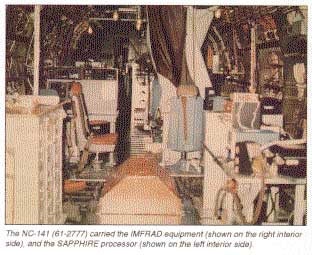
There is a lot of history in these four aircraft and it is very sad to see the
photos of 2777's destruction at ARMARC. It's like loosing a good friend.
As you can see from this view the crew entrance door on the NC-141A aircraft
61-2775,776,777 open out and up instead of in and up like the rest of the fleet.

Photo Copyright © - Don Cook
That is because the first three prototypes 775,776,777 were used in the initial
testing of the aircraft in the early 60's and the crew door had a jettison system
on them. When a handle was pulled in the fight deck the door would depart and
there was a bailout chute the crew would slide down and out the door. Also ship
#4 61-2778 which was the last prototype was flown in active service with the 438
MAW at McGuire AFB,N.J. The first production aircraft was 61-2779 and was
designated an NC-141A and was flown with the 4950th test wing at WPAFB,Ohio along
with 775,776,777.
Also on 61-2777 you can see but can't make out the nose art that was installed on
this Aircraft. It's nickname was the Gambler and the art was a fan of playing
cards of an Ace, Duce and three 7's. The nose art was installed by the then
civilian crew chief Sam Brazil at WPAFB.

Steve Broander
The following 3 photos were submitted by Mike Muldoon:
Here are some pictures of 2777 that were taken while we were doing test flights
at White Sands missile range in NM.
Note that there are two different A-6's shown in these photos. The first A-6 was
testing a radar system the was to be used to get a radar signature of the B-2 and
we were the stand-in for the B-2. The second A-6 had a radar system on the nose
that was doing the same thing only getting the radar signature from the rear of
the aircraft.
The F-15 was testing infrared warning systems to detect a missile fired from
another aircraft. The F-15 was firing inert missiles at us and a T-38 photo chase
was taking some photos.
I was with the 4953rd Squadron (4950th Wing) from 91-93 when the unit closed down
at Wright-Patt and moved to Edwards.
Mike Muldoon


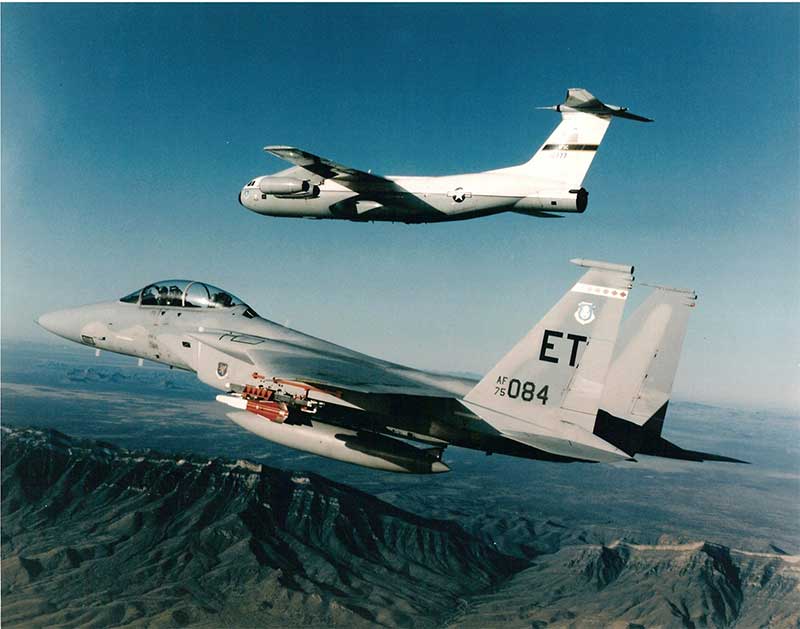
Copyright © - USAF Photos

Note that the crew door lifts up!
Copyright © - Don Cook

Copyright © - Don Cook
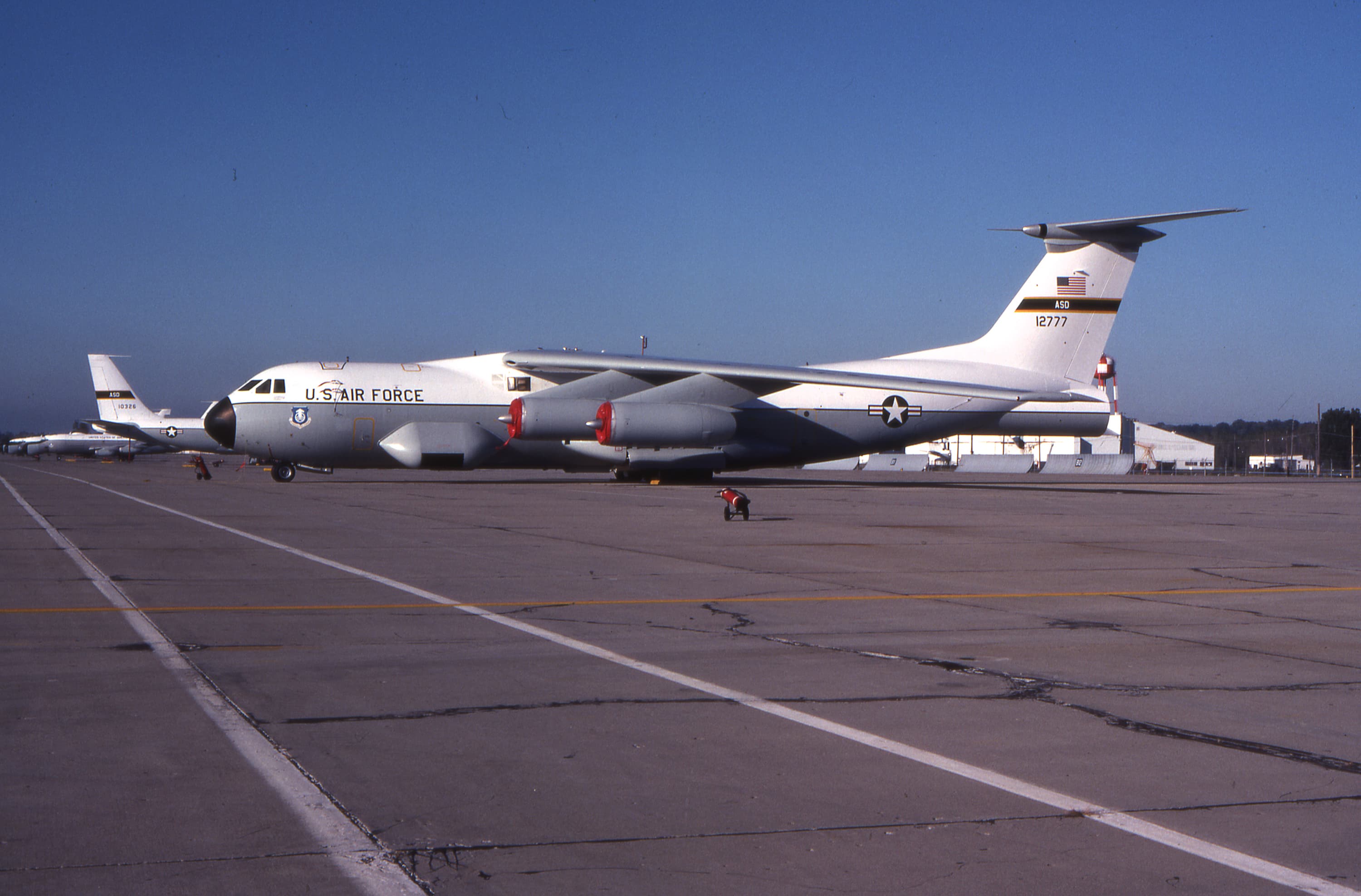
Copyright © - Don Cook

Copyright © - Don Cook
You can see how difficult it would have been to load any cargo in this aircraft.
Also note the modifications to the cargo doors.
You can clearly see the square panel on the back of the tail can where the radar
antennas were mounted.

Copyright © - Don Cook

Might be Tucson or Edwards.
Copyright © - Michael Baldock

November 81
Copyright © - Ronald McNeil

Source: USAF Photo

Source: USAF Photo

January 1986
Copyright © - Paul Minert

Source: Paul Minert

Source: Paul Minert
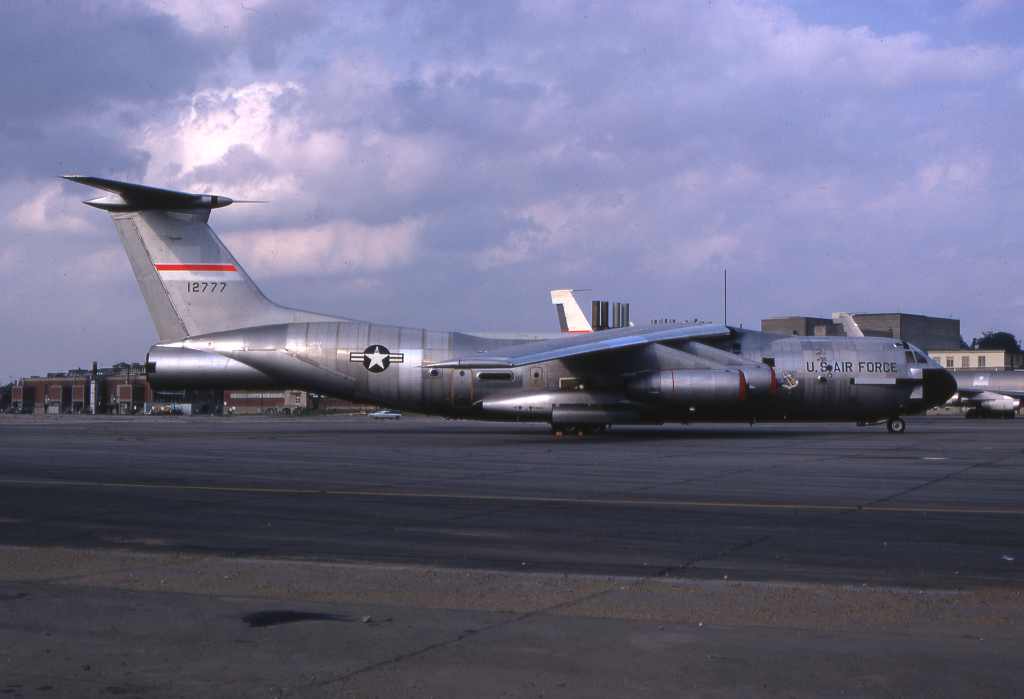
Source: Paul Minert

Source: Bob Shane

17 August 1990
Source: Geoff Lebaron


Waiting for the end at the Boneyard. Note the severed wings in the lower left
corner of this photo.
Copyright © - unknown

Too Late
Copyright © - Phillip Michaels
Source:www.amarcexperince.com

Ouch!
Copyright © - Phillip Michaels
Source: www.amarcexperince.com

Ouch!
Copyright © - Phillip Michaels
Source: www.amarcexperince.com
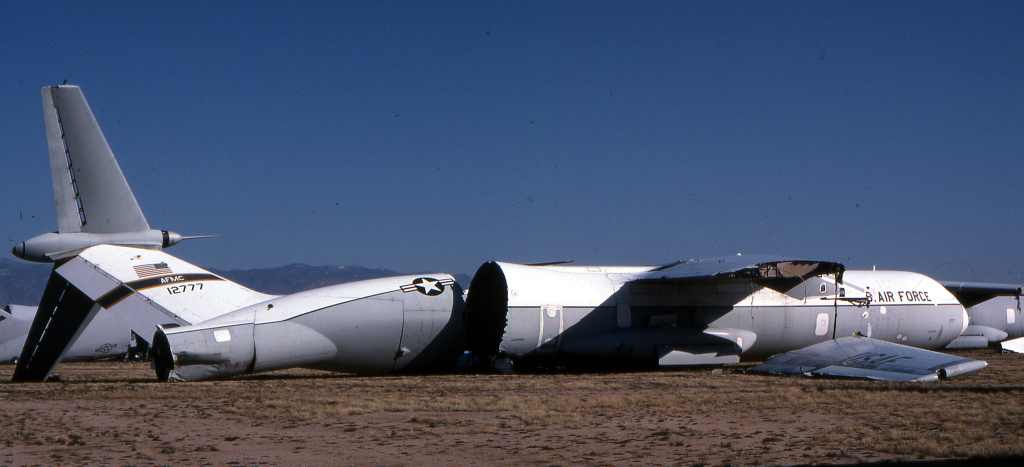
Source: Bob Shane
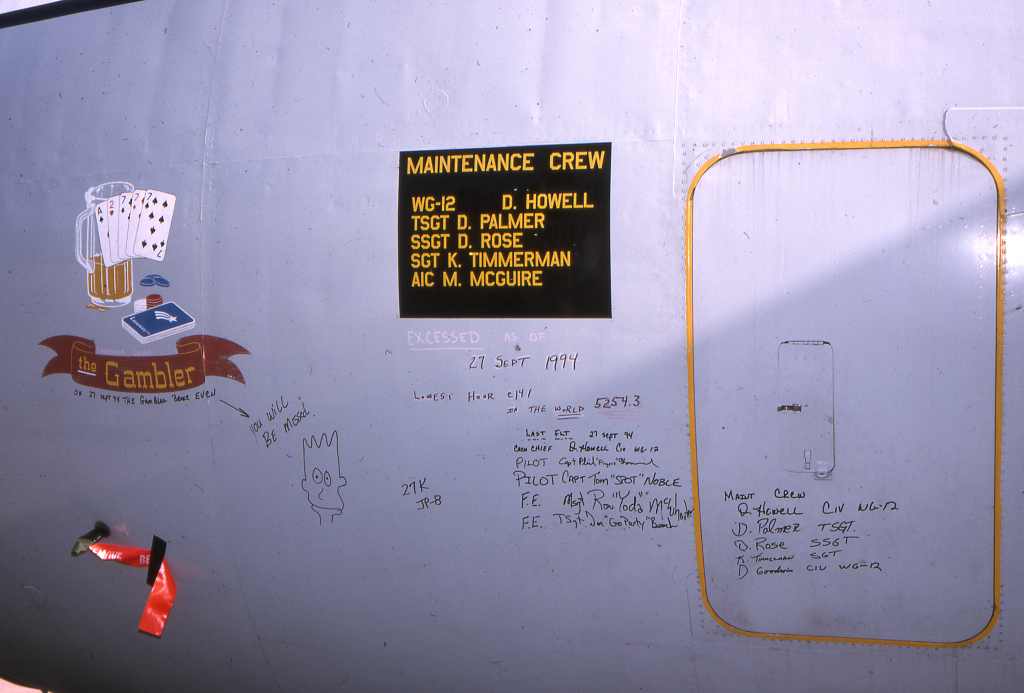
Source: Paul Minert

Source: Paul Minert

Source: Paul Minert
 >
>
Source: Paul Minert
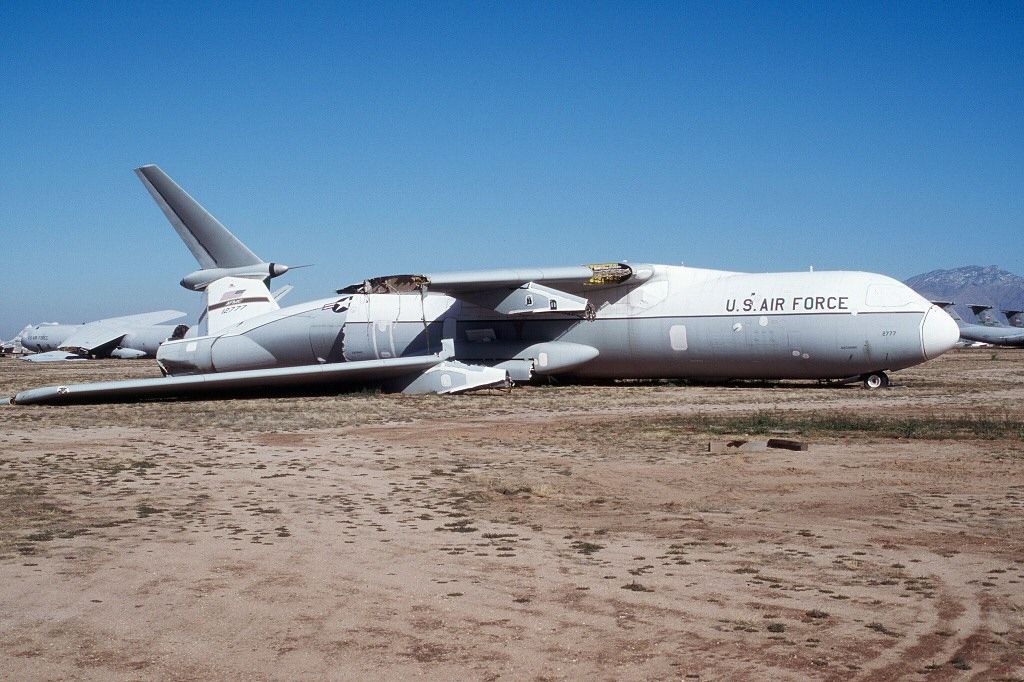
Copyright © - Phillip Kovaric

Copyright © - Phillip Kovaric